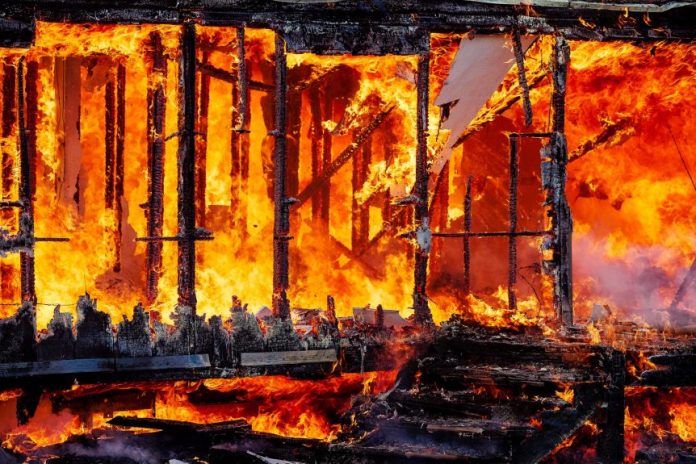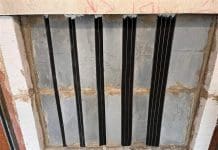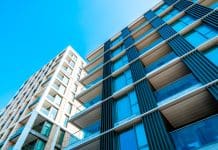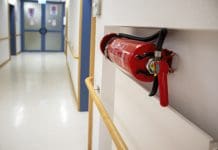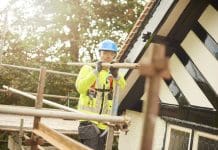Asbestos can present many risks for builders, particularly in a fire. Here, Neil Munro of Acorn Analytical Services offers a guide on what to expect
As a builder, it is very likely that you will eventually come into contact with a site containing asbestos. Asbestos may be present in any buildings built prior to 2000.
What is asbestos?
Before we go any further, we should look at what asbestos is so we can accurately identify the risks that come with it. Asbestos is the name given to several naturally occurring silicate minerals that are fibrous. These minerals have been heavily utilised and exploited for their seemingly “magical” properties. Asbestos fibres have great flexibility, high tensile strength, incombustibility, low thermal conductivity and resistance to chemical attack. At the peak of its use, asbestos was the cheapest material on the market. These factors led to the widespread adoption of asbestos and asbestos-containing materials in the construction industry and indeed it was the “go to” material for builders.
However, once the dangers were discovered regarding asbestos came into the public domain, the government had to take action. Various bans have been introduced relating to asbestos over the years. However, the key date to remember is the final prohibition of asbestos in November 1999. This means if you are working in any building constructed prior to the year 2000, it may contain asbestos and you should take all necessary precautions to ensure you do not disturb it.
So what are the risks for builders?
Now we’re going to look at the risks that are present for builders. Asbestos is a hazard because of a unique process. Asbestos strands can be split into smaller and thinner fibres during disturbance. Asbestos mined ore will initially divide into visible strands, fibre bundles and individual fibres. This splitting can continue on to minute levels of microscopic size. This process is unique to asbestos and is why airborne asbestos is such a problem.
Asbestos fibres can become so small that they remain airborne longer and pass undetected by the respiratory dust defences. These microscopic fibres may become inhaled into the lungs. Once in the lungs, because of their properties such as chemical resistance, asbestos fibres are also resistant to the human body’s natural defence mechanisms. As such, asbestos fibres remain within the body and may cause significant health problems.
As a builder, you are putting yourself at risk when you work on a site and disturb the fabric of the building without knowing if asbestos materials are likely to be disturbed. Not making an assessment if asbestos is present not only puts you at risk; it puts everyone else in the building at risk and goes against all asbestos regulations.
If you are involved in the demolition or if you are carrying out building work on a particular building built prior to 2000, make sure you get an asbestos survey beforehand.
Asbestos and fire
When asbestos is exposed to fire, it becomes even more of a hazard. Exposure to intense heat can cause the materials to deteriorate significantly, which in turn can lead to increased fibre release. If there’s been a fire in a building with asbestos, you should not enter it or attempt to work in it until it has been dealt with and made safe by a specialist team. This, in most cases, will be a HSE-licensed asbestos contractor and a UKAS-accredited asbestos consultancy. Overall, the risks that are associated with asbestos in a fire are significantly increased and exposure to asbestos fibre is highly likely.
The key message to remember is that asbestos may be present in any building built before 2000. You are at risk of being exposed to asbestos if you do not identify if it’s present before starting work. This risk will be significantly multiplied if the building has been fire damaged. Don’t take the risk, get it checked before you start work.
Neil Munro
Director
Acorn Analytical Services
Tel: +44 (0)844 818 0895
Twitter: @acornas


